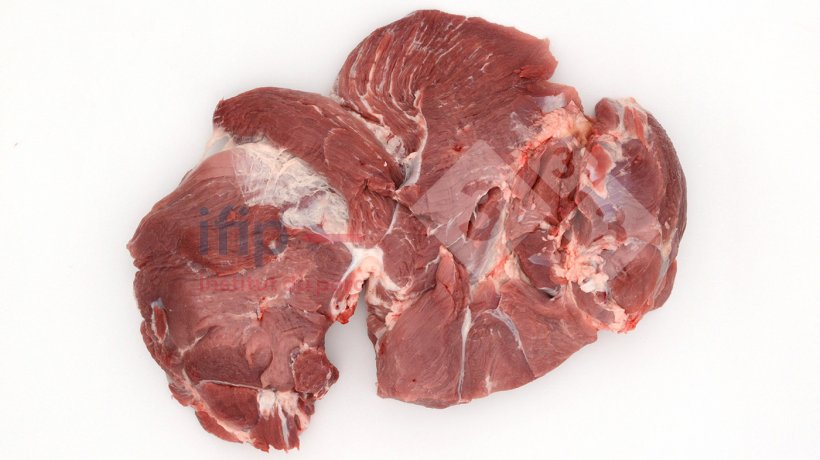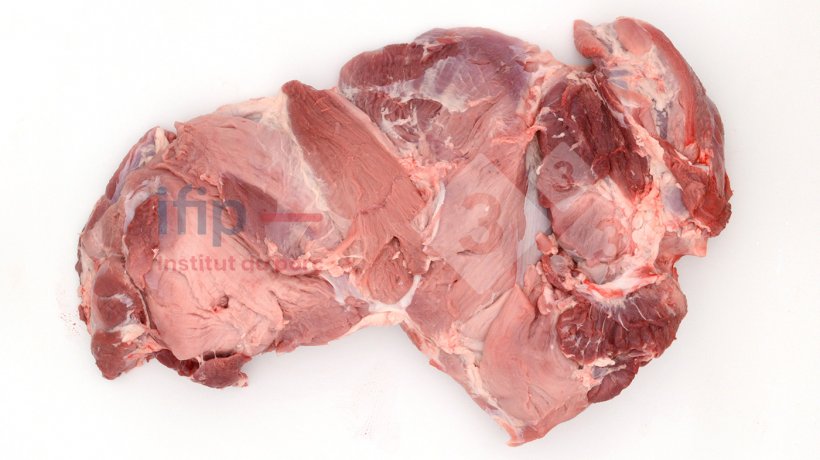The destructuring defect is a major pig meat quality problem that affects the interior of the thigh muscles and causes significant losses during the manufacture of superior cooked ham: reduced cooking yield and increased losses in the cut. The frequency of this defect was 19% according to a study conducted by IFIP in 2019 on 10,000 hams in five slaughterhouses. Although the effect of entire male pig production on meat quality is fairly well documented, particularly in terms of meat pH, little is known about the consequences of not castrating on the rate of destructured hams.

Ham with no destructuring.

Destructured ham.

IFIP conducted an exploratory study to provide an initial assessment. This work consisted of an in-slaughterhouse survey conducted directly on the deboning line. Comparisons were made between entire males, castrated males, and females with the latter serving as a control eliminating the “day of slaughter” and “farm of origin” effects, which are known to affect meat quality significantly.
The presence of the destructuring defect was evaluated in 10,125 hams at the slaughterhouse. The uniformity of this evaluation was guaranteed using the CSB-Jamboflash system developed in collaboration with IFIP, which uses a camera and a system for automatic recognition of the destructuring defect.
Sex was identified in deboned hams with the rind at the beginning of the deboning line by observing several characteristics: degree of development of the prostate and vas deferens, amount of subcutaneous fat covering the semimembranosus muscle, absence of rind in the testicular area. Traceability of the sex was then ensured by using colored tags that followed each ham until it entered into the CSB-Jamboflash system, where the defect score was automatically assigned to the color of the tag by image analysis.
Conducting a survey on a production line can pose certain bias problems insofar as the selection is carried out in the cutting room, where only a portion of these hams will be selected for deboning. These selection criteria refer mainly to weight,lean meat content, and final pH of the ham, and are identical regardless of the origin of the farm and do not change over time. Despite this, a sex bias could occur if selection resulted in a sex imbalance within the farm and on the day of slaughter. To limit this risk the number of observation days was increased (18 total).

Rate of destructured hams according to sex.
For the entire trial, 11.3% of the hams were classified as “destructured” by CSB-Jamboflash. This rate is low compared to the 19% observed by IFIP in 5 slaughterhouses but can be explained by the fact that 40% of the hams were selected at pH 5.60, with pH being an important risk factor for the “destructured” defect.
The rate of “destructured” hams was 12.5% for entire males, equivalent to that of females (11.7%). The castrated male population showed a significantly lower rate of destructurization defects (9.5%) than that observed in females, consistent with previous IFIP work. The difference observed here between the destructurization rate of entire males and castrated males (+32%) remains consistent with literature data on pig meat quality, with a high proportion of studies reporting increased exudate and cooking losses for hams from entire males.
This prospective research will continue in 2024 with a more global project that will address the effect of entire male production and immunocastration on meat quality. The study, based on monitoring batches from partner farms, will focus more broadly on the effect of discontinuing surgical castration on measurements of pH (pH1, pH24), color, exudate, and destructuration.
This study was carried out in collaboration with the Gatine Viandes slaughterhouse and with the financial support of the interprofessional pork industry association, Inaporc.



